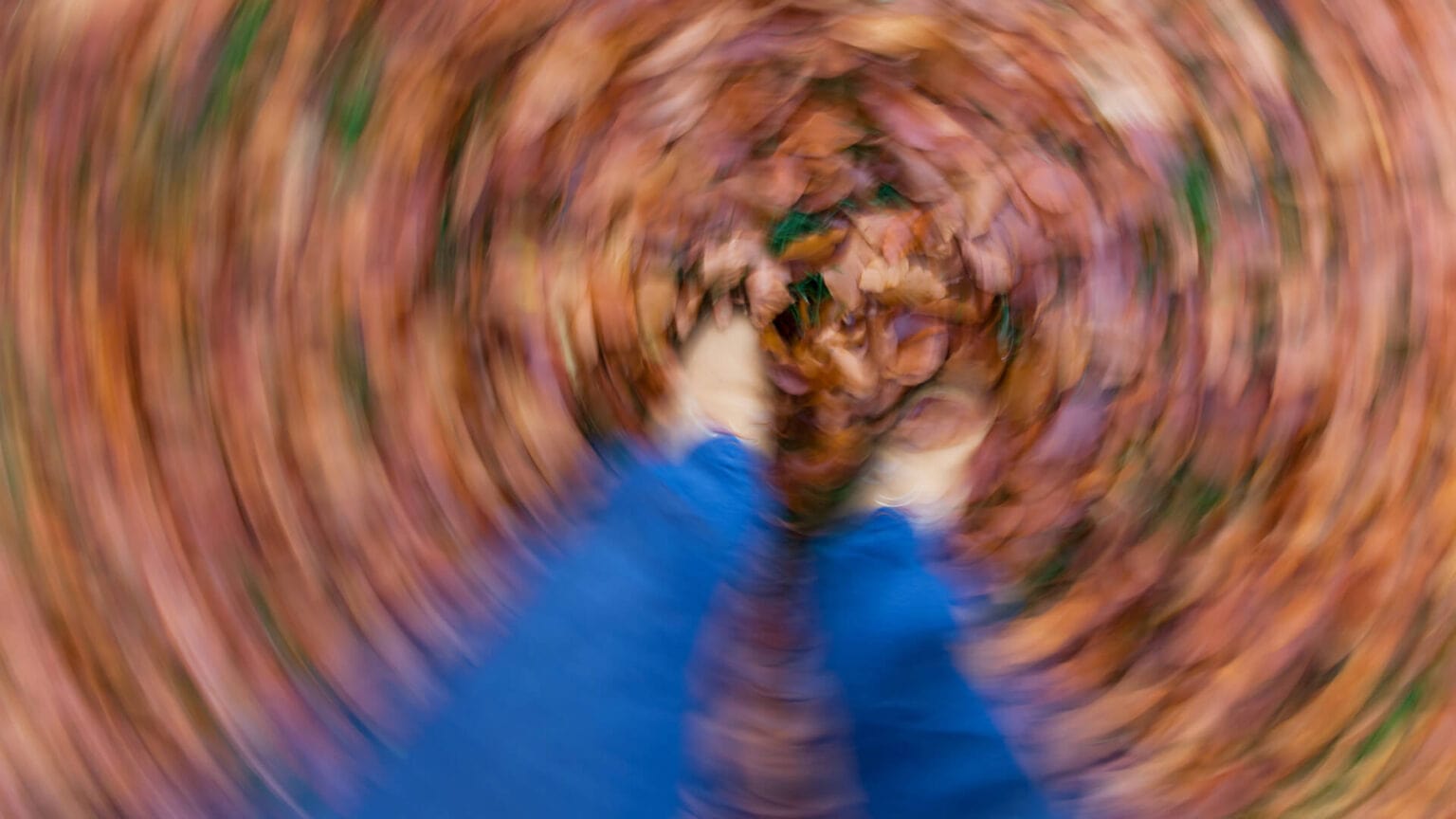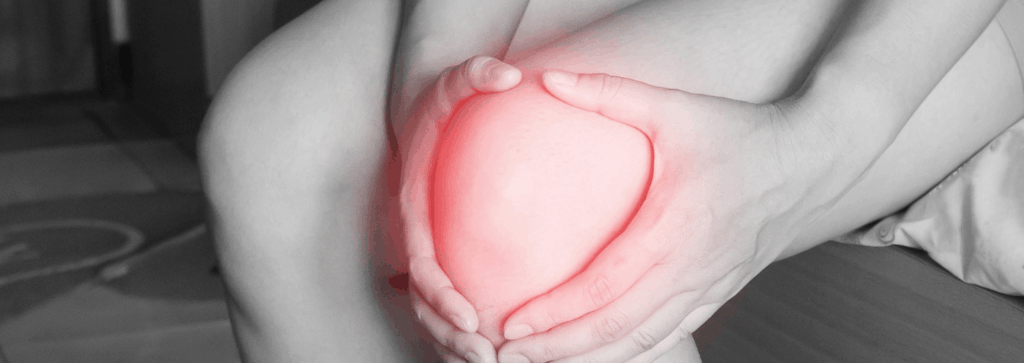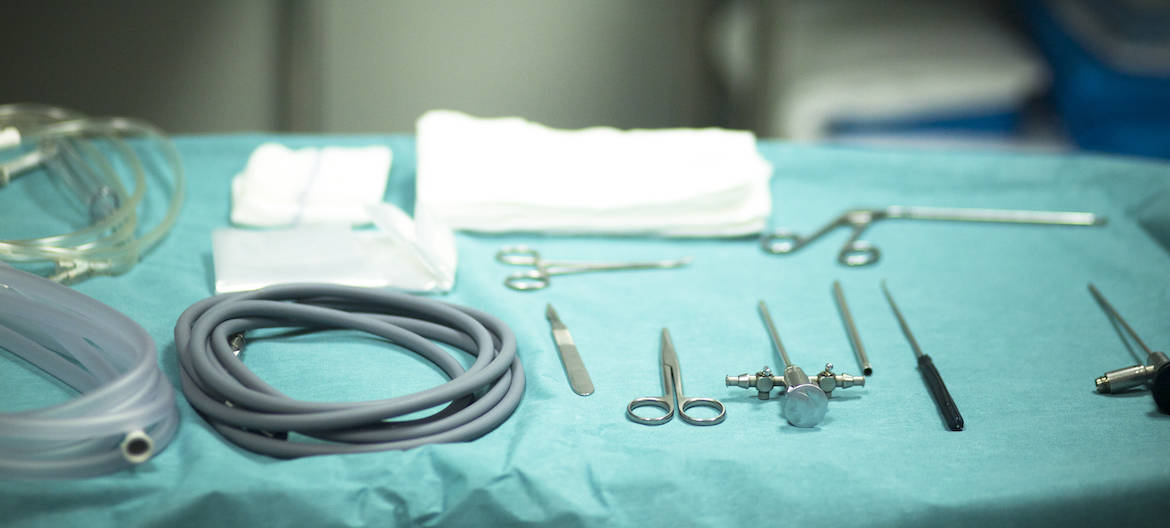This blog post is all about anterior cruciate ligament (ACL) injuries and their treatment. They are a common, painful injury across many contact and non-contact sports.
Unfortunately, an anterior cruciate ligament tear usually means an extended time out of sport for participants.
The good news is that your training program can reduce the risk of ACL injury and other knee injuries. This blog also includes information about the assessment, diagnosis and management of ACL injuries.
Anterior cruciate ligament injuries are common in sports that require higher demand on the knee like football (AFL or soccer), netball, basketball, rugby and skiing.
If you follow any sport, you will know that ACL injury tend to be quite high-profile injuries due to their recovery time.
Rory Sloane is the most notable AFL player this year going down with an ACL tear, his season finishing in Round 5 in the Crows win against the Tigers before undergoing ACL reconstruction surgery.
What is the Anterior Cruciate Ligament?
The knee is a hinge joint formed by three major bones: your femur (thigh bone), your tibia (shin bone) and patella (kneecap).
Surrounding the knee joint are strong muscles as well as their tendons and ligaments. These all have a role in providing stability.
The Anterior Cruciate Ligament (ACL) is one of many ligaments in the knee and is important for structural integrity.
The main job of the ACL is to prevent the tibia (shin bone) moving forward in relation to the femur (thigh bone).
It is sometimes accidentally called the ‘anterior crucial ligament’, but as you’ll read, it isn’t actually crucial.
The anterior and posterior cruciate ligaments are called ‘cruciate’ because together they form an ‘X’ shape, or a cross within the knee.
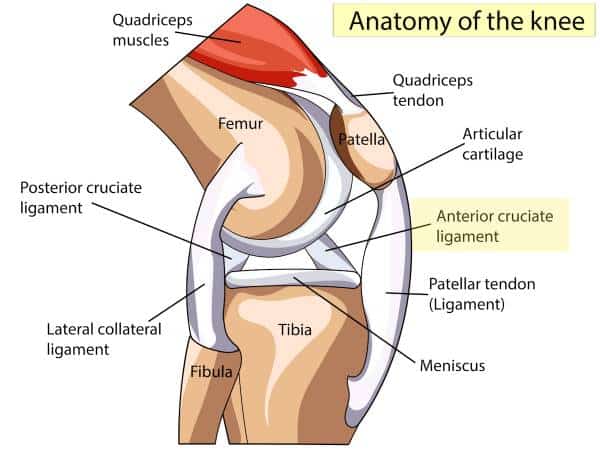
How do ACL injuries happen in sport?
The mechanism of injury of anterior cruciate injury usually involves one or a combination of:
- the knee being forced into hyperextension (when the knee bends too far backwards) when landing from a jump
- pivoting or changing direction: the foot is planted on the ground and the leg above the knee rotates on the lower leg
- the knee either buckling inward on landing from jumping or is forced in that direction by another player
- a traumatic incident involving tackling or sliding movements
These kind of incidents can cause the ligament to be put under more load than it can cope with. The injury to a ligament is called a sprain.
If the ligament is put under enough load, it can have a complete ACL tear, or rupture (see below Grade 3 sprain).
Interestingly most ACL injuries are non-contact.
In fact, you may be surprised to hear that over 70% of ACL injuries (and in some reports up to 85%) do not involve contact!
This goes to show the importance of body control, strength and landing mechanics.
Female athletes unfortunately are at higher risk of ACL tears in competitive sport. This is thought to be linked to biomechanics and strength differences compared to males.
Symptoms of an ACL injury
The typical symptoms of an ACL tear are:
- a popping sound
- a feeling of the knee giving out and being unable to weight bear
- pain
- swelling
- haemarthrosis – a quick onset of swelling caused by bleeding with an ACL rupture
- loss of range of motion
How are ACL injuries diagnosed?
Your physiotherapist or sports medicine doctor will take a detailed history of what happened and how your knee injury occurred, including your history on knee injury. You might be asked about the sensation of the knee feeling unstable, giving way, the degree of pain at the time of injury and whether you could weight bear.
With the objective examination, they will also look for signs of ACL instability through specialised tests that can detect an ACL tear (rupture). By comparing with the uninjured knee, any laxity or absence of ligament will be evident.
The other structures of the knee will also be tested, including the menisci (cartilages), lateral and medial collateral ligaments, quadriceps mechanism, patellofemoral joint and more as deemed appropriate.
These additional tests are important because about half of ACL injuries occur in combination with other knee structures being injured.
Imaging might be useful, though not crucial. X-Ray won’t give any information about the status of the ACL it but might help discover if any bony injury has occurred at the same time.
More commonly, magnetic resonance imaging (MRI) may be ordered depending on the findings of the objective examination. MRI is able to visualise soft tissue structures like the ACL.
More importantly, MRI can also reveal any other injuries such as meniscal tears, other ligament tears or bony injuries that may have happened.
How are Anterior Cruciate Ligament injuries treated?
ACL injuries can be treated with surgery, an ACL reconstruction, or non-surgically with physiotherapy rehabilitation.
There are different surgical procedures for ACL reconstruction that depend on the orthopaedic surgeon, their experiences with different approaches and the outcomes. These can including using a portion of your hamstring tendon as a graft (from the same leg or the opposite leg), or using the tendon between your patella and your tibia as a graft (patellar tendon graft).
Not all ACL injuries require surgery, so this decision will be guided by the views of your physiotherapist, sports doctor and orthopaedic surgeon after assessing the knee in question.
The evidence is getting stronger for the effectiveness of non-surgical management or so-called ‘conservative’ management as opposed to surgical management.
The decision will take into account age, health, life demands, tendency to give way, sporting commitments, MRI findings and functional limitations.
It is worth noting that the outcomes are no better if surgery is done immediately as opposed to waiting 6 months to trial non-surgical methods first.
Whichever path you take, whether surgical or non-surgical, the physiotherapy rehabilitation program is the key to a successful recovery or return to sport.
How long does it take to return to sport after ACL injury?
The extent of the injury to the ligament is going to have a big influence on the management and therefore the time for return to sport.
A full ACL rupture is a major injury requiring a long rehabilitation, regardless of whether it is a surgical or non-surgical solution.
Typically a minimum of nine months rehabilitation is required.
In the case of teenagers or young athletes, it can be closer to twelve months.
Returning to sport any earlier is linked with an increased risk of re-rupture. Some studies have shown the chances of re-injury are seven times more likely if return to sport occurs within nine months post injury.
This is partly due to the health and state of healing of the graft. It takes time for the implanted tissue to heal and become as resilient as it can be, and to take on properties of the original ligament.
Currently, most people who are looking to return to sport will have surgery.
Those not looking to participate in high level sports into the future may choose to manage this injury non-surgically. This really depends on the activity you wish to return to.
Cadel Evans competed in the 2008 Olympics, finishing 5th in the Olympic time trial with a torn ACL sustained during that year’s Tour de France.
He did this as there would not have been enough time to have surgery between the Tour and the Olympics.
In the case of non-surgical treatment, with appropriate management there can be very similar results compared to surgical management.
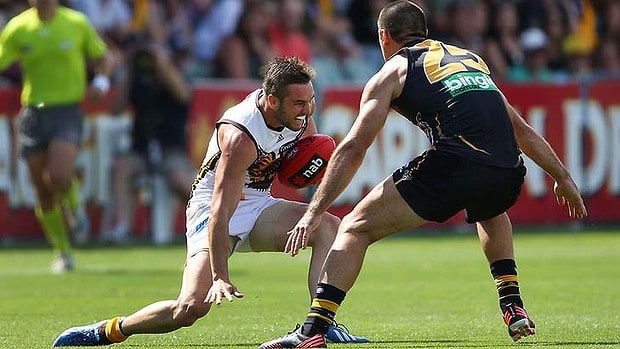
If you have any questions about ACL injuries, prevention or rehabilitation, call on 8356 1000 and have a chat to one of our physios.
ACL injuries in young athletes
The incidence of anterior cruciate ligament (ACL) injury and ACL reconstructions are on the increase in yourger age groups.
As children’s sport becomes more serious at younger age groups, the number of children needing ACL reconstruction has more than tripled in the last 15 years.
Grades of ACL injury and typical recovery time
Like all ligament conditions there are different levels of injury. Therefore the length of therapy and recovery time is partly based on the amount of fibres involved and the severity of the injury.
Grade 1 ACL sprain
A Grade 1 ACL sprain is the lowest grade of injury.
It usually only involves a small number of ligament fibers with a low level of damage caused.
This usually only results in a few weeks away from exercise/sport with gradual loading of the knee back to pre-injury levels.
Grade 2 ACL sprain
A Grade 2 ACL sprain is the second ‘level’ of injury. This may result in a partial tear of the ligament or a large number of fibres being damaged.
This usually requires months rather than weeks to return to sport.
It requires a strengthening rehabilitation program that looks similar to a Grade 3 rehabilitation program with loads and activities gradually progressed to pre-injury levels.
Grade 3 ACL sprain
A Grade 3 ACL sprain is the most severe ACL injury.
This results in a full tear or rupture of the ACL. It will require an extensive rehabilitation program whether surgery is involved or not.
Rehabilitation can be a little quicker if non-surgically managed but usually requires at least 9 months to return to full activity.
ACL injuries are common in soccer, but not the most common injury.
To learn which are the top 10 injuries in soccer, click here.
ACL injury prevention programs
Prevention is key – it’s the best way to avoid ACL injury and surgery.
Prehab is exercise that is done before injury to reduce the risk of injury. It is preventative exercise.
The FIFA 11+ program and the Netball Australia KNEE program are two ACL prevention programs that have been developed within the last 10-15 years.
They are research-based programs that have been designed to help lower ACL injury rates in their chosen sports.
Both programs incorporate a mix of running, strength, plyometrics and single leg control.
Both programs also have the flexibility to progress the exercises depending on an individual’s requirements and capabilities.
They are also designed to both be completed within roughly 20 minutes.
Interestingly, not only are both programs incredibly effective at reducing the rate of ACL injuries, but lower limb injuries in general.
Check out the reductions in injuries from the FIFA 11+ program below. It is pretty impressive.
Results of the FIFA 11+ programme
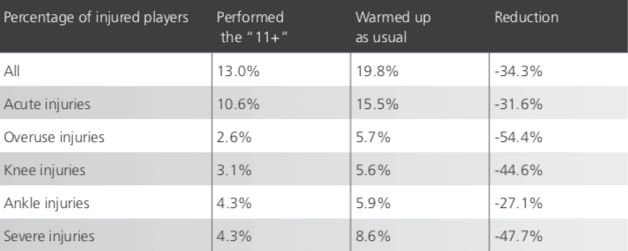
Those results are amazing.
Reducing knee injuries by nearly 50%, reducing overuse injuries by more than 50% and reducing overall injuries by a third is very impressive.
Better still, all of the incorporated exercises were designed to be performed anytime, anywhere.
All they require is the ball of choice and enough space to perform the running sections of the drills.
The role of physiotherapy in ACL injury
Physio treatment helps:
- reduce initial pain and inflammation,
- returning your joint its normal full range of motion,
- strengthening and lengthening supporting muscles where needed
- improve balance & proprioception,
- improve agility
- return to normal functional tasks such as running, squatting, jumping and landing
- minimising the chance of re-injury.
Principles of ACL rehabilitation
5. The final stage is gradually increasing sport-specific drills and training loads until the player has returned successfully to full training, followed by a return to game play.
Confidence is something that takes a while to recover and often comes in waves throughout the rehabilitation process. In order to return to training and competition, it is important not to feel any sense of hesitancy with the knee. This is a critical factor in returning to sport.
Final thoughts
If you are currently involved with sports or have kids who are, I highly recommend looking into these programs as a good starting point to ensure you are being proactive about preventing injuries.
Incorporating these programs is one step to improving you performance and keeping yourself on the field.
The links to both of the booklets are below:
FIFA 11+ https://www.sportsphysiotherapy.org.nz/documents/Injury%20prevention/fifa%2011.pdf
Netball KNEE Australia https://knee.netball.com.au/resources
Other articles that might be of interest:
Ankle sprains – A comprehensive look at a common injury, but an injury not well managed.
Soccer injuries – An interesting breakdown of the 10 most common soccer injuries and why they happen.
Jumper’s knee – Kimberley Wilson has written this blog on a condition that is very common amongst volleyballers, basketballers and kangaroos
Organise A FREE Physio Phone Consult
Get some FREE ADVICE, find out if physiotherapy can help your problem and give you pain relief, and importantly, find out if we are the right physios for you!
Alternatively, you can organise a free 15 minute assessment in person at the clinic.
To Organise a Phone Call with a Physio
- Option one: Click on the ‘Online Bookings’ button at the top of the page, then choose the ‘Free Physio Phone Consult’ option and find a time that suits you.
-
Option two: Call us on
8356 1000 and organise a time for a call back from one of our physios for a discussion with you about your problem.














